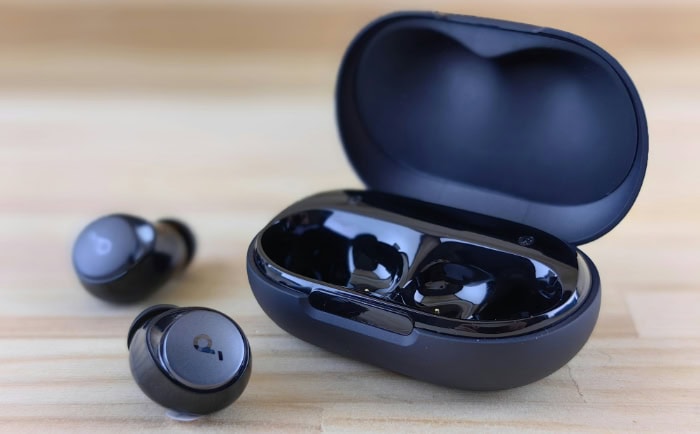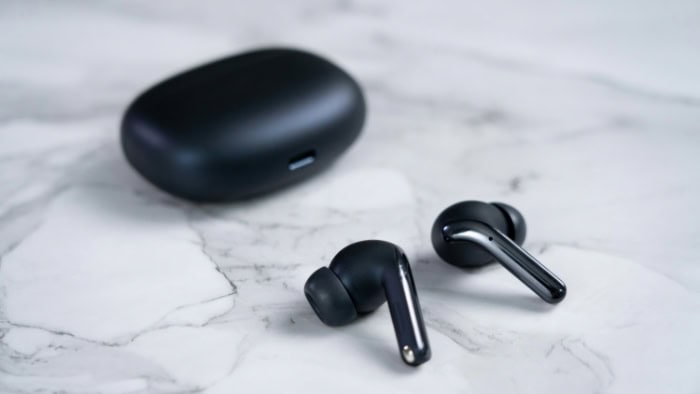What Are True Wireless (TWS) Earbuds? Cutting the Cord

True wireless earbuds have swiftly transformed our audio experiences, offering a level of convenience and freedom that traditional headphones simply can’t match. These innovative devices, known as TWS (True Wireless Stereo), eliminate not only the physical connection to your device but also the wires between each earpiece.
This leap in technology means you can enjoy music, take calls, and interact with your voice assistant without ever getting tangled up. But what exactly makes TWS earbuds a game-changer in personal audio, and how do you pick the right pair to suit your lifestyle?
The Progression of Wireless Audio
Wireless audio technology began to gain popularity with the introduction of Bluetooth in the late 1990s. Initially, Bluetooth headphones were quite cumbersome and primarily used for communication rather than music.
However, as technology improved, so did the design and functionality of these devices.
By the mid-2000s, wireless headphones that offered both quality sound and freedom from tangled cords became more common, setting the stage for further innovation.
Breaking Free with True Wireless
True wireless technology marks a significant milestone in the evolution of earbuds. Unlike traditional wireless earphones, which still feature a cord or band connecting the left and right earpieces, true wireless earbuds operate without any physical connections between them.
This advancement was made possible by the development of more reliable and energy-efficient Bluetooth technology, allowing for smaller batteries and better power management within a compact design.
Milestones in True Wireless Innovation
The journey to perfecting true wireless technology has been marked by several key innovations. Improvements in battery life, sound quality, and additional features like noise cancellation and integrated voice assistants have propelled TWS earbuds into mainstream popularity.
Manufacturers have also focused on enhancing the user experience by improving the connectivity range and stability, which were initial challenges for early models. Recent developments include the introduction of low-latency audio transmission to better sync audio with video content, a feature particularly appreciated by gamers and movie watchers.
Inside True Wireless Earbuds
True Wireless Stereo (TWS) earbuds are not just about cutting the cord; they are a marvel of modern engineering packed into a tiny package. Each earbud contains several sophisticated components that work together to deliver high-quality sound, maintain a stable connection, and offer user-friendly features.
The Core Components
Bluetooth Chips: The heart of any TWS earbud is its Bluetooth chip, which handles wireless communication between the earbuds themselves and the connected device. These chips are designed to be extremely power-efficient and support various audio codecs that determine sound quality and connection stability.
Batteries: Due to the compact size of TWS earbuds, they contain small batteries. Despite their size, these batteries are powerful enough to provide hours of playback. Advances in battery technology and power management software continue to improve playback time significantly.
Drivers: Drivers are the components that actually produce sound within the earbuds. Most TWS earbuds use dynamic drivers, which are known for their wide range of frequencies and rich sound. Some high-end models might use balanced armature drivers for even better clarity and sound precision.
Microphones: TWS earbuds often include multiple microphones with features such as noise cancellation and beamforming to enhance voice quality during calls. These microphones can also interact with voice assistants, providing hands-free control over your device.
Connectivity
Bluetooth profiles and codecs play crucial roles in how devices communicate and transmit sound. Profiles like A2DP support audio streaming while HSP and HFP are important for voice calls. Moreover, codecs, including AAC, SBC, and aptX, directly impact audio quality and manage latency during playback.
Mono vs. Stereo Mode
TWS earbuds can operate in both mono and stereo modes. Mono mode allows a single earbud to be used for calls or listening to audio, which is useful when you want to keep one ear free.
Stereo mode uses both earbuds for a full audio experience, with each earbud playing its part of the stereo track.
Audio synchronization is critical in maintaining a seamless audio experience. TWS technology ensures that both earbuds play audio simultaneously with minimal latency.
This synchronization is vital for enjoying music and videos without any noticeable delay between what you see and what you hear.
Charging Cases and Battery Life
The charging case for TWS earbuds does more than just store the earbuds. It also recharges them, often providing multiple full charges before needing to be recharged itself.
This makes TWS earbuds highly portable and convenient for extended use throughout the day.
Battery life varies between different models and is influenced by volume level, distance from the connected device, and the codecs used. Most TWS earbuds offer between 4 to 8 hours of playback, with the charging case providing additional charges that can extend total usage time up to 24 hours or more.
Manufacturers continue to develop more efficient battery technologies to extend the life of both the earbuds and the charging case, ensuring users spend less time tethered to a power outlet.
The TWS Advantage

True Wireless Stereo (TWS) earbuds offer a range of benefits that make them a popular choice for many users. From their cord-free design to their advanced features, TWS earbuds provide a level of convenience and functionality that traditional earbuds cannot match.
Convenience and Freedom
One of the most significant benefits of TWS earbuds is the complete elimination of wires. This means no more untangling cords, no accidental yanking of earbuds out of ears when the cord catches on something, and no restrictions on movement.
This freedom is particularly appealing to those who lead active lifestyles or simply enjoy the neat, minimalistic approach to personal audio.
Comfort and Fit
TWS earbuds are designed with ergonomics in mind. They typically come with multiple ear tip sizes to ensure a secure and comfortable fit for a wide range of ear shapes.
This customization not only enhances comfort but also improves sound quality by creating a better seal, which helps in noise isolation.
Suitability
TWS earbuds shine in scenarios where mobility and convenience are paramount. For exercisers, the earbuds stay secure even during vigorous movements, and many models feature water and sweat resistance, making them ideal for workouts.
Travelers appreciate how easy it is to store and use TWS earbuds in cramped spaces like airplane seats. Professionals also benefit from the ability to seamlessly switch from music to calls or to use voice commands to interact with their devices, enhancing productivity and maintaining focus at work.
Smart Features
Modern TWS earbuds often come equipped with smart features that extend their functionality beyond just listening to audio. With built-in microphones, they support hands-free calling and access to virtual assistants like Siri, Google Assistant, or Alexa.
This integration allows for convenient control over your device without needing to physically handle it, which is especially useful while driving, cooking, or when your hands are otherwise occupied.
Traditional Wired vs. Wireless Earbuds
When compared to traditional wired earbuds, TWS earbuds offer superior freedom and mobility without sacrificing audio quality. Unlike older wireless models that still require a neckband or cable between earpieces, TWS earbuds provide a truly unencumbered experience.
TWS Trade-Offs and Limitations
While True Wireless Stereo (TWS) earbuds offer numerous advantages, they also come with certain trade-offs and limitations that potential users should consider.
Cost and Risk
One of the most apparent drawbacks of TWS earbuds is their cost. Generally, they are more expensive than traditional wired or wireless earbuds due to the advanced technology required to make them function independently without wires.
Additionally, the small and separate nature of TWS earbuds makes them easier to lose. Without any physical connection between the earbuds, losing one can be as easy as dropping it while running or misplacing it after removing it to talk to someone.
This risk necessitates careful handling and often the purchase of accessories like earbud straps or cases with tracking capabilities.
Audio Quality and Latency Issues
The audio quality of TWS earbuds can vary significantly depending on the supported codecs. Codecs compress and decompress digital audio data, and different codecs offer varying levels of audio quality and latency.
Common codecs include SBC, AAC, and aptX, each with its strengths and weaknesses concerning sound quality and transmission speed. Users might experience lower sound quality or noticeable delays between video and audio outputs if their earbuds and audio source do not support a high-quality codec.
This issue is particularly relevant for users who watch videos or play games where audio sync is crucial.
Choosing the Right TWS Earbuds
Selecting the perfect True Wireless Stereo (TWS) earbuds involves more than just picking the most popular brand or the latest model. It requires a thoughtful consideration of your specific needs and preferences.
From sound quality to battery life, and from special features to budget constraints, each factor plays a crucial role in determining the right fit for your lifestyle.
Prioritizing Your Needs
The first step in choosing TWS earbuds is to prioritize what matters most to you. Sound quality is crucial for music enthusiasts, while fit might be more important for active users who need secure, comfortable earbuds during workouts.
Battery life is key for travelers or those who spend long hours away from power sources. Additional features such as noise cancellation, water resistance, and compatibility with voice assistants can also be decisive. Finally, price plays an undeniable role; it’s important to find a balance between cost and the quality or features you require.
Understanding Specs and Marketing Jargon
When shopping for TWS earbuds, you’ll encounter a variety of technical terms and marketing jargon. Drivers determine the sound quality, with larger drivers generally providing better bass response.
Codecs, such as AAC, SBC, and aptX, affect how audio is transmitted from your device to your earbuds, impacting sound quality and latency. IPX ratings indicate the level of water and dust resistance, which is crucial for earbuds used during exercise or in outdoor environments.
Trying Before You Buy
Whenever possible, try on different TWS earbuds before making a purchase. The fit not only affects comfort but also sound quality, as a better seal can enhance bass response and overall sound isolation.
Many stores offer demo units that allow you to feel how the earbuds fit in your ears and even listen to a few audio tracks to test sound quality and comfort.
Conclusion
True Wireless Stereo (TWS) earbuds represent a significant advancement in personal audio technology, offering users an unprecedented level of freedom and convenience. These devices eliminate the need for any physical connections, not only between the audio source and the earbuds but also between the earbuds themselves.
This development has revolutionized how we interact with our audio devices, making it easier than ever to enjoy music, take calls, and use voice assistants on the go.
However, TWS earbuds come with their own set of challenges, including higher costs, potential for loss, and varying degrees of audio quality and connectivity issues. These factors make it crucial for potential buyers to carefully consider what features are most important to them.
Whether it’s sound quality, battery life, comfort, or additional functionalities, aligning these priorities with the right product is essential for satisfaction.



